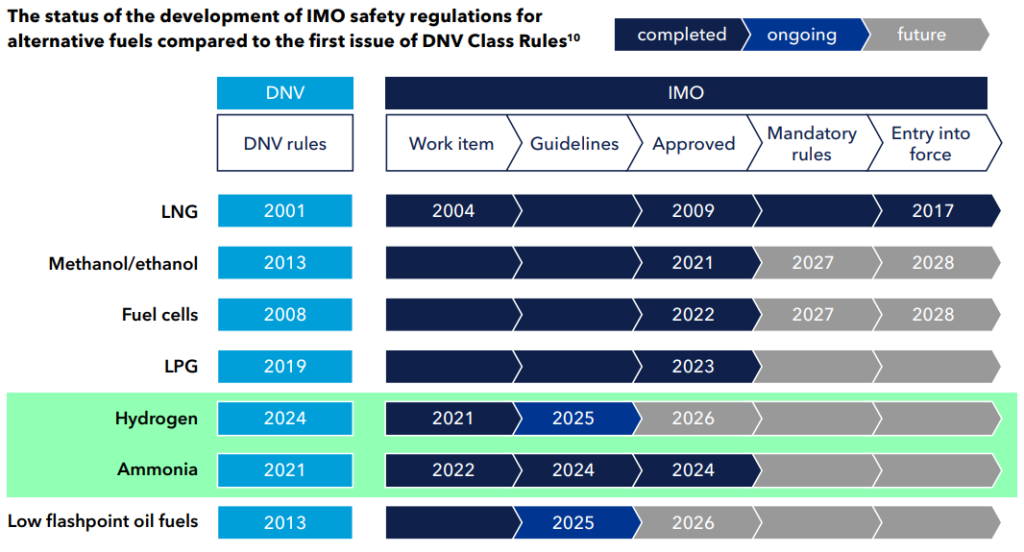One challenge of working on hydrogen as marine fuel is that while the technology is ready and successfully applied on board, while regulations are not there yet. The new DNV white paper outlines these issues and provides a roadmap for approval and implementation. The report is recommended reading. Here is a summary.
Current Status of Hydrogen as Ship Fuel
- Hydrogen is already used in many industries, but its maritime application is still developing.
- The first hydrogen-powered vessels, such as the MF Hydra ferry and Project 821, have entered service.
- Most hydrogen ships today are small or experimental. Larger deep-sea vessels face storage and safety hurdles.
Safety Challenges
- Hydrogen is highly flammable, prone to leakage, and has a wide explosive range.
- Cryogenic storage (-253°C) requires advanced insulation to prevent boil-off and structural embrittlement.
- High-pressure hydrogen tanks pose additional risks, including spontaneous ignition during leaks.
Regulatory Landscape
No detailed IMO regulations currently exist for hydrogen-fueled ships.
The IGF Code only includes prescriptive rules for natural gas.
The IMO aims to develop hydrogen-specific regulations by 2028.
Until then, hydrogen-fueled ships require approval through the Alternative Design Approval (ADA) process.

Timeline for Hydrogen Fuel Adoption
- 2021 – IMO starts developing hydrogen safety guidelines.
- 2023 – First commercial hydrogen ferry (MF Hydra) enters service.
- 2024 – DNV publishes hydrogen ship classification rules.
- 2025 – Further regulatory advancements expected.
- 2028 – Earliest possible adoption of mandatory IMO hydrogen fuel regulations.
Ship Design Considerations
- Hydrogen requires more space than conventional fuels, impacting ship layout.
- Safe integration includes double-walled pipes, specialized ventilation, and explosion-proof compartments.
- Fuel cells are preferred for efficiency and safety, but hydrogen combustion engines are under development.
Future Outlook
- The transition to hydrogen-fueled ships depends on regulatory support and technological advancements.
- Collaboration among shipowners, designers, regulators, and fuel suppliers is essential.
- The industry must develop bunkering infrastructure and crew training to ensure safe operations.
Key Diagram
The development spiral shows the path from introducing hydrogen as a new marine fuel to widespread adoption. This requires iterative improvements in technology, regulation, and ship design.
These advancements position hydrogen as a key player in the future of sustainable shipping. The transition is complex, but with innovation and regulatory backing, hydrogen can lead the industry toward zero emissions.
Leave a Reply